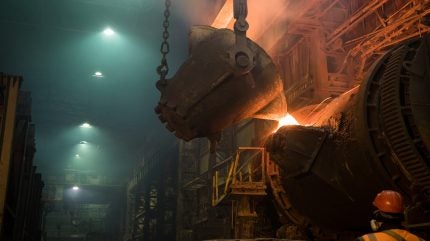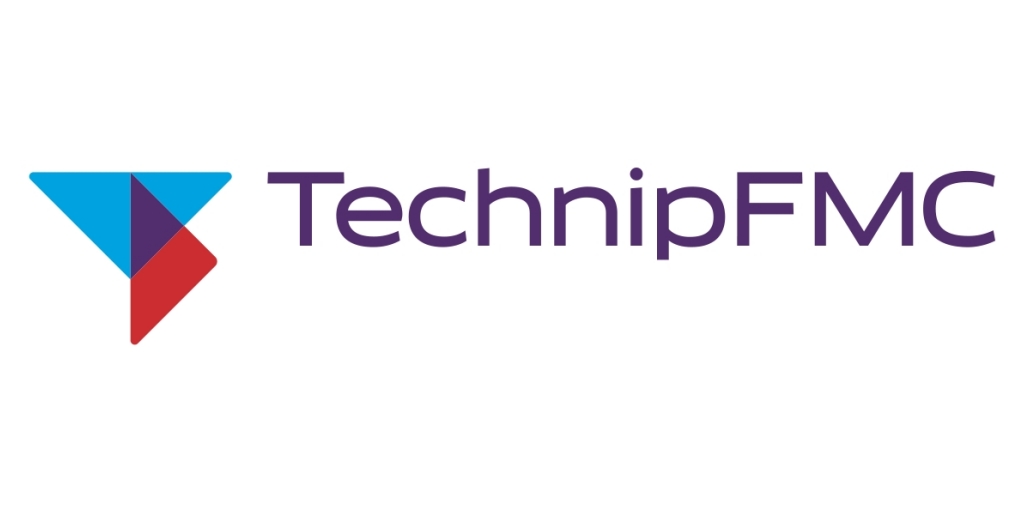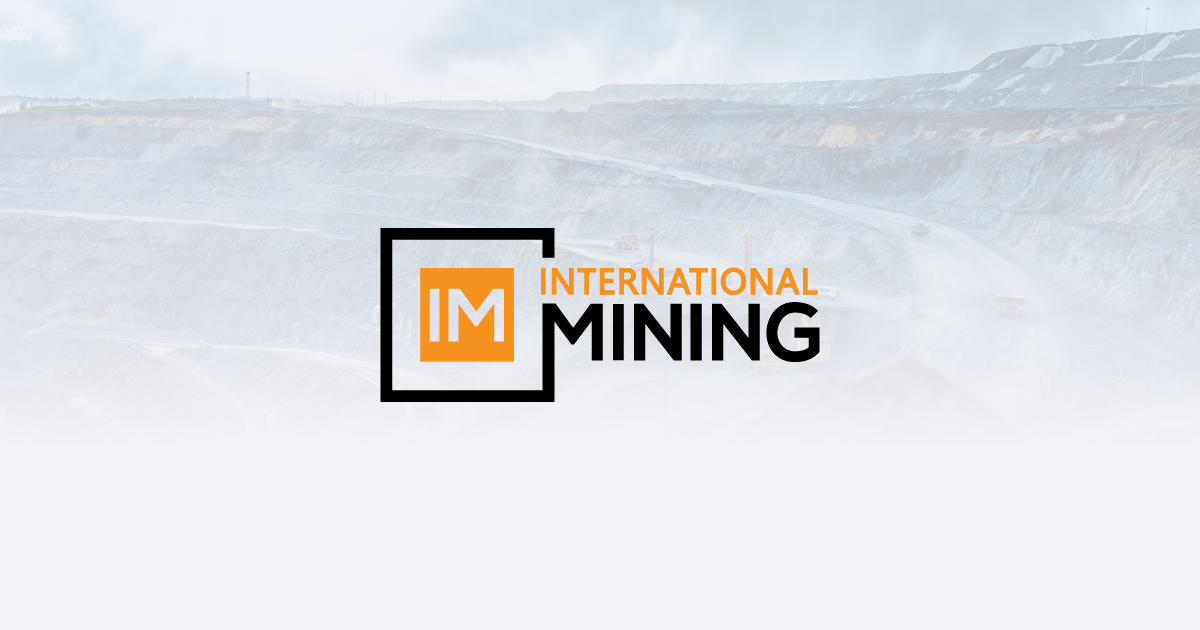 Sign up for daily news updates from CleanTechnica on email. Or follow us on Google News!
Sign up for daily news updates from CleanTechnica on email. Or follow us on Google News!
Recently the long term leader of the USA’s Distributed Wind Energy Association, Mike Bergey of Bergey Windpower and a long term acquaintance, reached out to ask me to keynote the annual conference in Washington. Putting together my material led me to consider the strategic drives and how they would be positive or negative for wind turbines in the 3.5 kW to MW scale. All told, the indicators are good. What follows are the slides and a lightly edited transcript of my prepared material and the Q&A session.
Thank you so much for having me today. It’s a fascinating time. As Mike alluded, it’s a challenging and transforming time. But as Mike said, distributed wind is essential to US rural industry of all types, not just agriculture, but especially agriculture because they’ve got wide open spaces.
I’m reminded of the only time I think I met Mike in person. I was in Las Vegas in 2014 at WindPower, the major annual event that AWEA used to put on. I was actually living in Singapore then. AWEA paid for me to be at WindPower 2014, in part because I was at the time the senior fellow of wind for the Energy and Policy Institute based in Washington, D.C.

At the time, the mood was bleak. When I was walking the halls of the convention center in Las Vegas, talking to people about the innovations in wind energy that they’d been working on for years, the production tax credit was on everybody’s mind. Everybody was very nervous about the end of the incentives for wind energy. There was a lot of depression. There was a lot of concern. I spoke to innovators in logistics who were worried they were going to have to park their fleet of trucks. But I’d like to say that while it might seem dark today and the rest of the world might seem a lot brighter, my perspective at the time was it was a blip.
Yes, the rest of the world was brighter. Wind energy was going from strength to strength globally. There was local concern in the United States, and I would say local and short lived. To cast your minds back to 2014, 2014 was actually a banner year for wind energy deployments in the United States. Then the production tax credit was preserved. The production tax credit was preserved at the time because the politicians in Washington made a deal. They made a deal to allow crude exports from the United States and in return they continued to subsidize clean energy. That led to a lot of wind energy deployment and a lot of solar deployment in the states year after year since. It’s been a tremendous success story. It’s one of the leading countries in terms of renewables and that’s going to continue.
I’m going to say from my perspective, from the outside looking in, I think the tea leaves are really positive for distributed wind for the next four years, despite everything else that’s going on. There’s some really good stuff that is going to be transformative for the United States and also good for smaller wind generation in farms and rural industries. While it’s a bit bleak today, I would urge you to be optimistic.
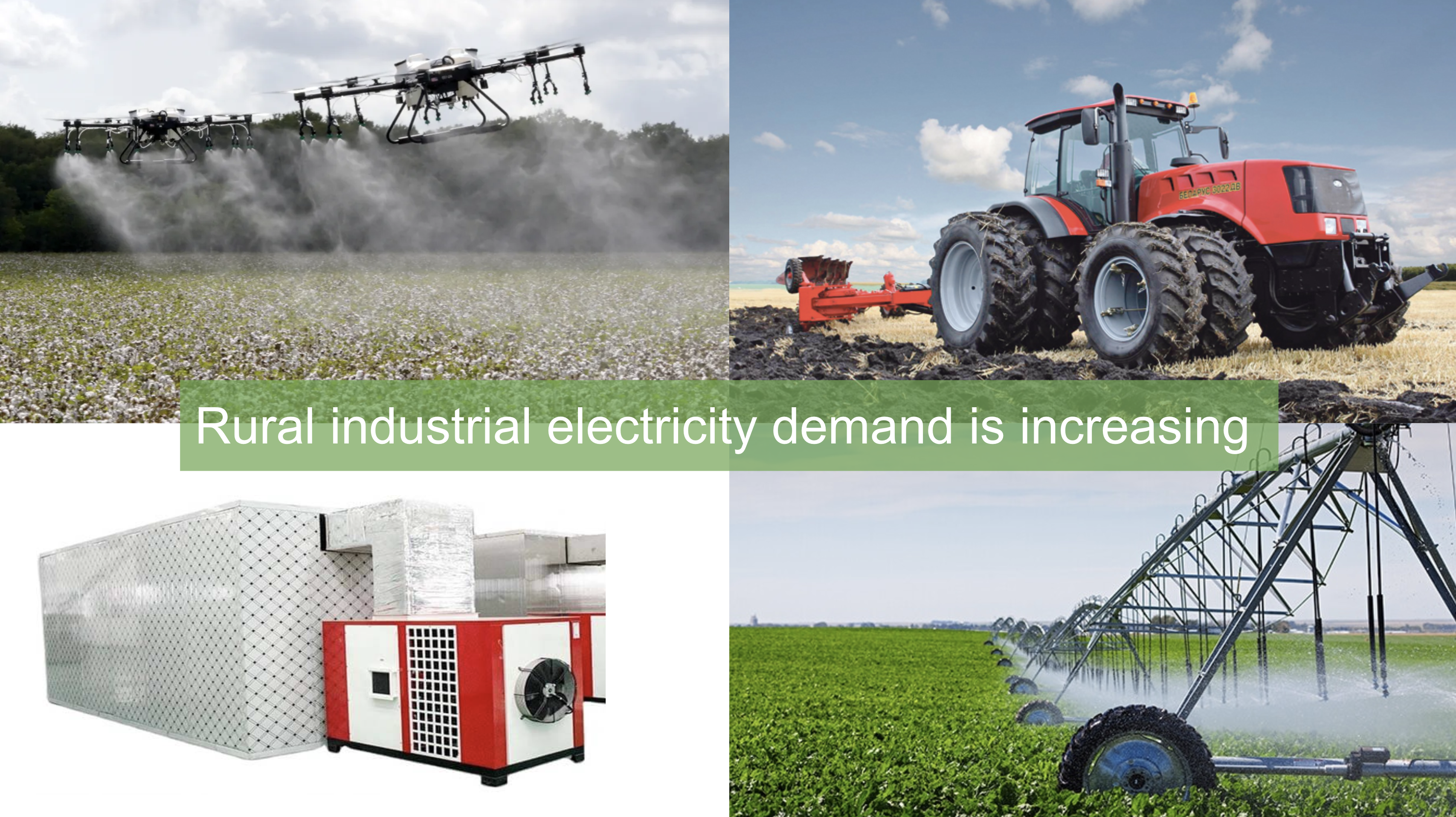
The first reason is that rural demand for electricity is going to be climbing rapidly. That’s simply that anything that can be electrified will be electrified because electricity is just a lot more efficient. We lose a lot less energy.
In the upper left, we see heavy lift drones that are now being used across the United States and around the world for both seeding and spraying, specific aspects of precision agriculture. Two heavy lift drones operating for a day can spray as much crop as a $700,000 John Deere tractor. They only cost a couple of hundred grand. Firms like Hylio, based out of Texas, are making 14-foot diameter wingspan drones that can spray 200 pounds of product in autonomous runs that are set up by the farmer the night before at a dining room table or his kitchen table. They lay out the product that’s going to go down, they lay out the path the drones are going to follow.
The drones sip electricity as they put exactly the right amount of nutrients or herbicides or pesticides exactly where they’re needed on the crops. That’s informed by other drones that have done surveillance over the crops, other electrically-powered small aircraft, unmanned, that are zipping over the crop, saying there’s a dry spot, there’s a spot that needs nutrients, and putting that into cloud-based platforms that analyze the data and provide insights to farmers about how to maximize crop yield.
There’s a really interesting advantage of heavy lift drones, which is they don’t compact the soil. Studies out of Ohio find that up to 55% of productivity of fields is lost due to compaction from tractors and other heavy vehicles. So spraylift drones not only have those advantages of precision agriculture and significantly reduced product requirements, but they actually increase crops through lack of compaction. That’s electricity again. Electricity is required more and more.
We’re starting to see more and more farm equipment with wheels and other things that are electric. It’s not just pickup trucks, it’s not just small utility vehicles. We’re now seeing the emergence of significant tractors of significant capability that are now delivering crop efforts. Once again, they’re not running on diesel. That means they’re a lot more efficient and a lot less expensive to operate, reducing farmers’ costs. They start to pay for themselves quite rapidly.
Continuing around, you’ve probably had conversations about irrigation and its energy demands. Electric pumps for irrigation are a major energy demand in Alberta, which is not far from where I am. The primary reason why wind power and small solar is so dominant in the south of Alberta is to power irrigation pumps for agriculture. Once again, more electrical demand, and that’s going to increase because the energy has to come from somewhere and there’s some headwinds for rural energy that distributed wind is going to have some strong advantages to be competitive with.
I was asked a few years ago, how am I going to dry my peppers? In the bottom left, that’s an electrically powered heat pump, pepper drying device. [Not shown.] You know, it’s a modular component, it works it and heat pumps are great. One unit of electricity produces three units of heat. It’s once again much cheaper. It’s four times more efficient than burning natural gas to create the heat. It doesn’t have the byproducts of particulate matter and nitrous oxides which cause low grade ozone problems. Farmers care about their kids and their kids’ health as well. As we move forward, we’re going to be seeing more and more demand for electricity in rural areas.
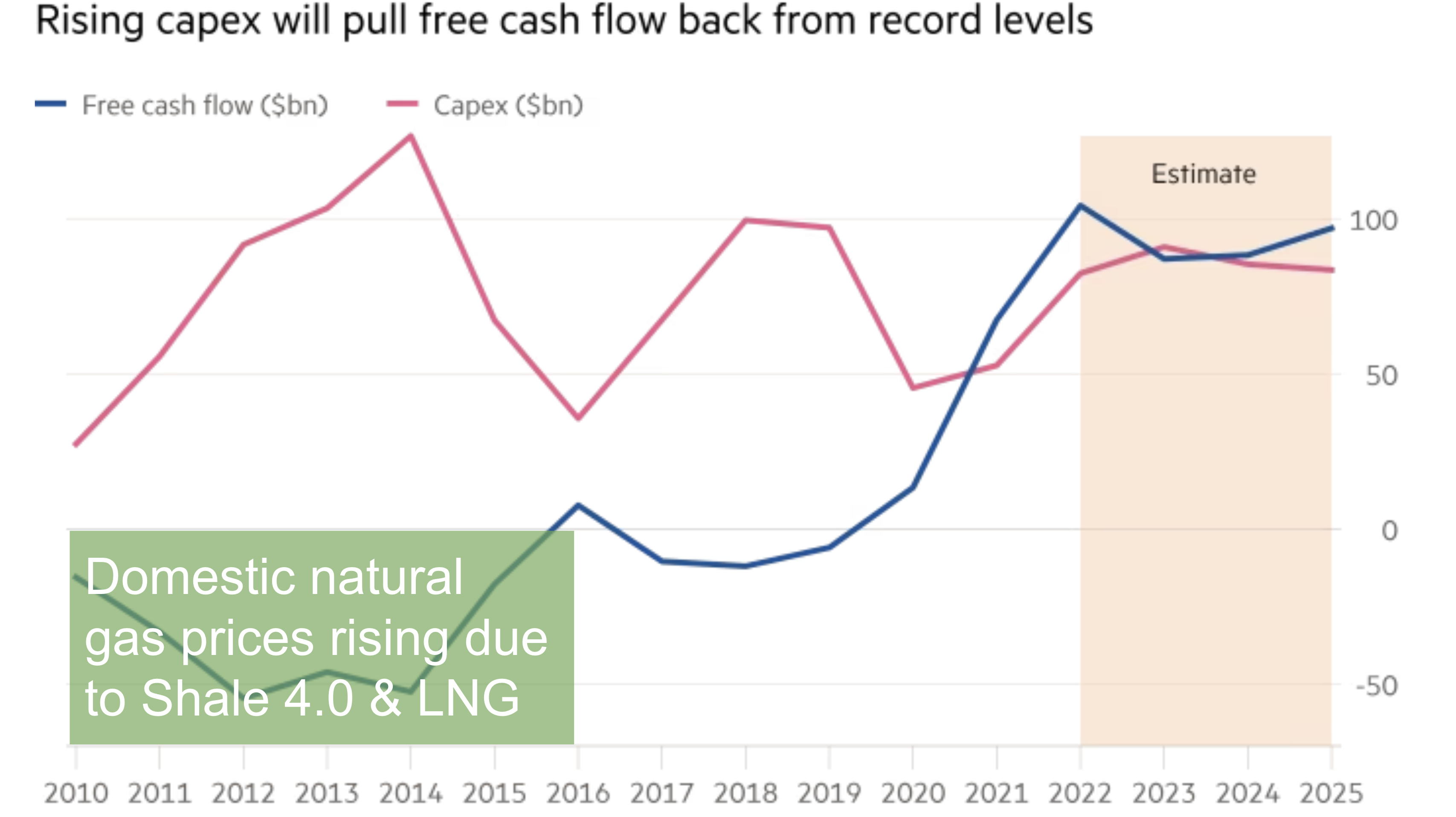
Farmers, like a lot of other people in the United States, have been really enjoying the cheap natural gas that’s been around for a long time. But there’s a structural change underway in natural gas in the United States. About 70% of the natural gas volumes come from shale oil.
You can’t get shale oil without getting some gas. Similarly, you can’t frack for gas without getting some oil. It’s a waste byproduct in both cases. They try to actually get places or they have been getting places recently for the past 20 years of fracking and shale oil where they get enough gas that it’s economical to take to market. That’s had some significant advantages. In the United States, natural gas prices have been non-volatile and low, which was a reversal of the standard pattern for natural gas, which is it always spiked in the winter. That’s led to a lot of people enjoying that cheap natural gas and that cheap energy.
Except they have run out of the good sites. Now we’re into shale 4.0 they call it, where the best sites have already been taken. The cost to develop the new sites, which only last about three years, is now significantly higher. That means that there’s a lot fewer sites that break even unless oil prices stay high, and oil prices are structurally going down. China hit peak oil and peak gasoline last year and the year before and it’s hitting peak coal this year. So is the rest of the world. The United States hit peak diesel and Europe hit peak diesel a few years ago. The developed world is not increasing its demand and in fact is declining in demand.
We see the same thing in the developing world. Kenya and Nairobi are ordering thousands of electric buses. India has made all of its small two- and three-wheeled passenger vehicles electric over the past few years. India actually has more electric buses than either Europe or North America. The developing world is leapfrogging the West. This is especially true in China, of course, where they have 700,000 electric buses on their roads and this year are going to have 50% of their car sales being electric.
What that means for natural gas prices is two things. The first is that the supply of natural gas domestically in the United States is not going to go up. It’s going to be flat or it’s going to decrease. At the same time, there’s 28 million tons per annum of new LNG export capacity coming online. One of the reasons why Biden put a pause on LNG export terminals was that domestic gas prices in the United States started going up because the domestic supply was being bid and competed for by the LNG exporters who could make more profit on it. Now the pipeline into ships steaming overseas is increasing substantially, which means that their price hits on domestic natural gas are going to be there as well. Natural gas domestically is going to be priced much more closer to natural gas globally. That means the price is going to increase because of exports. At the same time the supply is going to go down.
This is not great news for a lot of businesses who’ve invested heavily in natural gas infrastructure because they’re going to see inflationary pressure. But it is great news for small wind turbines up to a megawatt in scale because electrification eases that problem. As you look for the natural gas prices, when you’re doing your sales pitches and doing your estimation and doing your work with clients, do consider the natural gas prices because it’s changing the economics of rural energy.
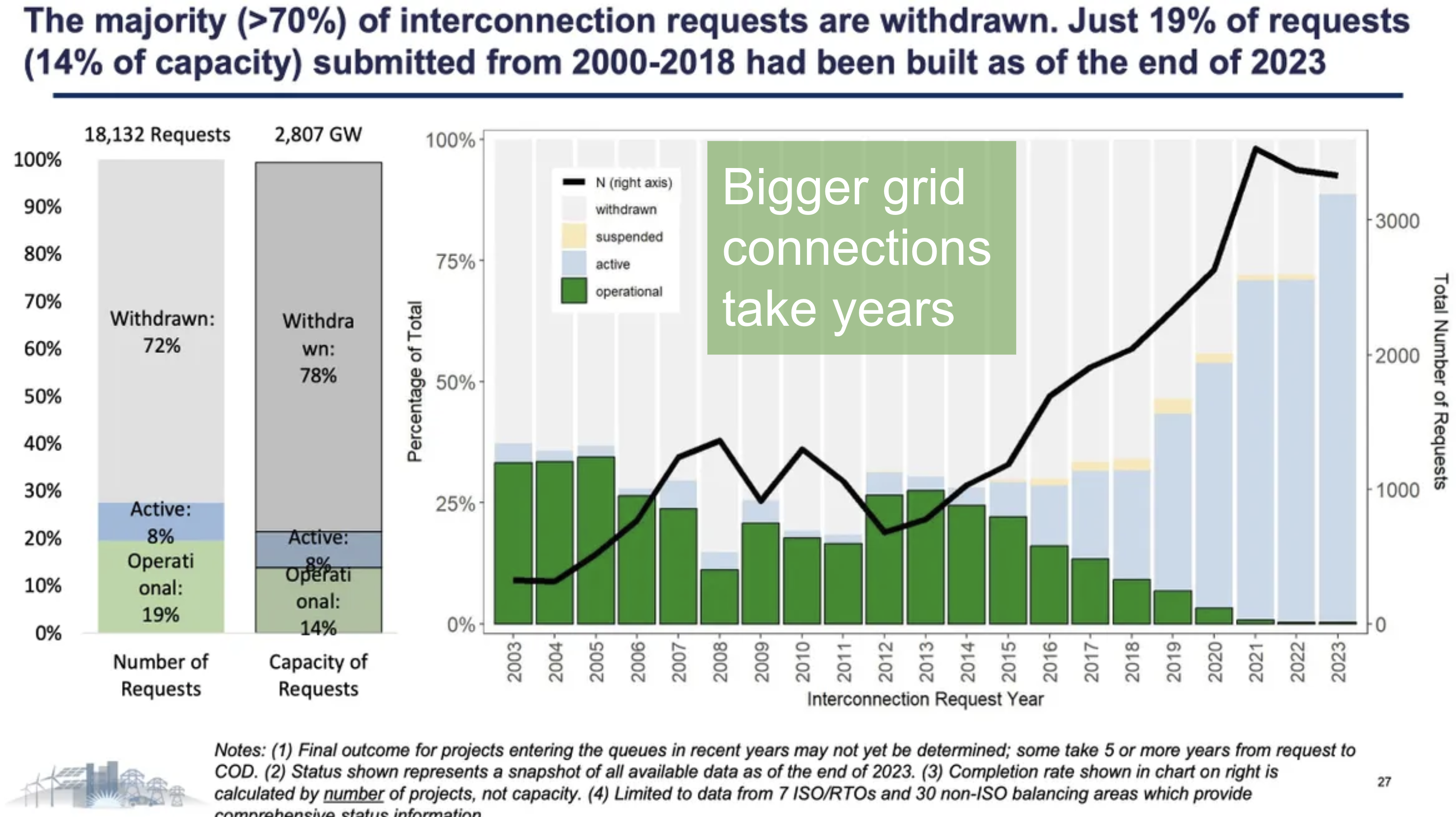
Where’s the electricity going to come from? There’s a problem in the west writ large and in the United States as well, which is it’s taking longer and longer for big-scale grid connections to come from utilities. If a ranch wants a megawatt-scale grid connection that can take seven years.
All the utilities are focused on data centers, not on ranches and not on major farms, not in the agribusiness space nearly as much. There’s competition for the components necessary for those grid connections and for the upgrading of those grid connections. The United States has a relatively weak rural grid compared to Europe’s rural grids. It’s more like Canada’s. We didn’t invest heavily in very robust scaled infrastructure in advance and it’s been fairly stagnant for 30 years. In the west, light emitting diodes just disappeared all of the electricity demand that we thought were going to have 30 years ago, the last time there was a grid transformation.
That grid connections are taking years is great news for local generation of electricity, whether that’s solar or distributed wind. If it takes a long time to get a grid connection to power those tractors and those heat pumps and those heavy lift drones and the Ford F150 Lightning pickup trucks that are so common these days, or even a Tesla Cybertruck, though I’m not sure how farmers are adapting to that as opposed to, you know, celebrities, that means there’s a significant opportunity across rural United States to sell more distributed wind. This is true for solar as well. It’s also true for batteries. You’re going to see a strong growth of micro grids behind the meter generation. The United States is perhaps most uniquely has a mentality of getting off grid.
It’s not necessarily off grid, in fact, it’s counterproductive because grid connections provide a lot of value, but a lot more generation behind the meter and a lot more buffering battery storage to enable all those devices to charge when off the battery as opposed to off the grid connection or off the solar panels when the sun is shining. Batteries are dirt cheap right now in China, the last grid-scale auction for 16 gigawatt-hours of battery, 76 bidders bid an average of $66 per kilowatt hour for 20-year maintenance and full battery energy storage systems. Even with the current tariffs on batteries from China, that’s still 80 bucks a kilowatt-hour, which is incredibly inexpensive compared to what it was last year or the year before.
As you go forward, one of the things I recommend to you is to look at supplementing behind the meter microgrids with solar and batteries as a key channel and embrace being one of the power supplies for rural agriculture.
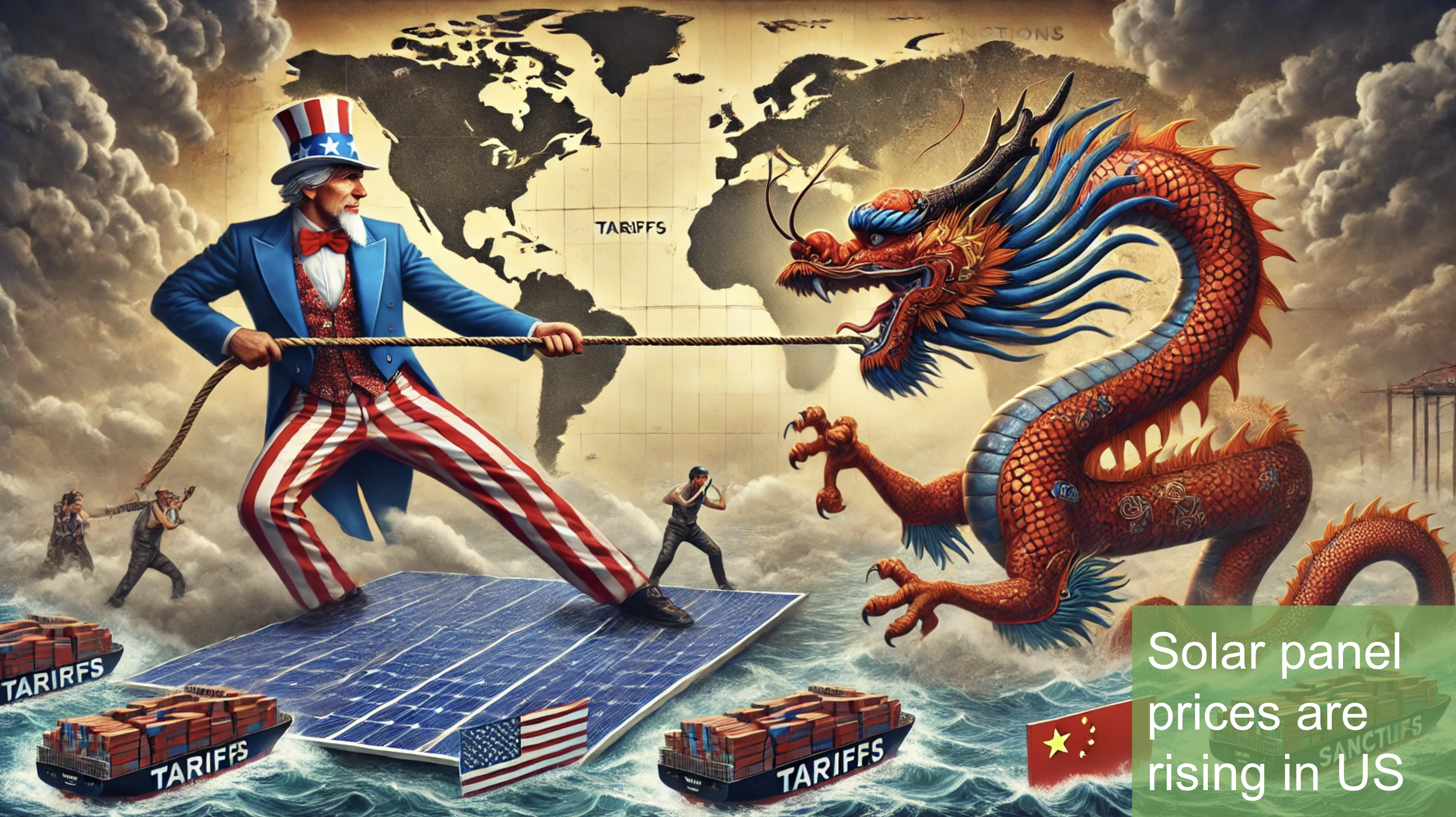
Solar is facing some challenges that distributed wind manufactured in the United States is not. Over the past 20 years, the United States and Europe have ceded solar panel manufacturing to China. China is pumping out billions of solar panels. The last time I did a count we were at 3 billion solar panels, and that was a couple of years ago. Now we’re probably at 6 billion solar panels, mostly built in factories in China. That’s meant the US domestic manufacturing of solar panels has pretty much disappeared, as is the case in Europe.
The west has ceded manufacturing solar panels just as they seeded the manufacturing of so many other things to China. Now the United States is in a different stance regarding all these technologies, batteries and solar panels, and is applying tariffs and protectionist trade policies to try to reinvigorate US manufacturing, aspiring to onshore manufacturing of solar panels. That’s going to raise the prices of solar panels. United States manufacturers do not have the scale or the ability to scale that the Chinese manufacturers have. Even if they start now and put a lot of money and capital into manufacturing solar panels, it’s going to be years before they’re as cheaply manufactured as they are in the massive factories in China.
That means that solar right now is going to go through an inflationary period in the United States at the same time that distributed wind will not suffer quite those inflationary challenges, as the manufacturers in the audience probably know. However, the current administration has put tariffs on steel and aluminum, which I’m pretty sure are required for your products. There are going to be some inflationary pressures on locally manufactured wind energy, just different ones. I haven’t done the math. I’m sure you’re looking at that. You know, do spend some time considering that. One of my recommendations is lock in your steel and aluminum supplies domestically as much as possible.
If you’re not using steel from electric arc furnaces, which is 70% of steel supply in the United States, do consider that, simply because it is a high quality product that is using scrap from the United States. It’s also going to be suffering some likely inflationary pressures. The United States gets 70% of its steel from scrap metal because it imports a lot of metal in products from China and around the world, which then gets into junkyards, which then gets scrapped, which then gets turned into new steel for the domestic requirements in the United States. As the United States onshores manufacturing, there’s going to be a change in the scrap market and hence the electric arc furnace market as well.
Overall, my assessment is solar panels are going to be hit a lot more than wind turbines manufactured in the United States. I’m just going to say this clearly. You guys know Made in America is selling really well to Americans, especially in rural areas, these days. You have an advantage, you have a sales pitch that resonates strongly in this political and cultural moment in the United States.
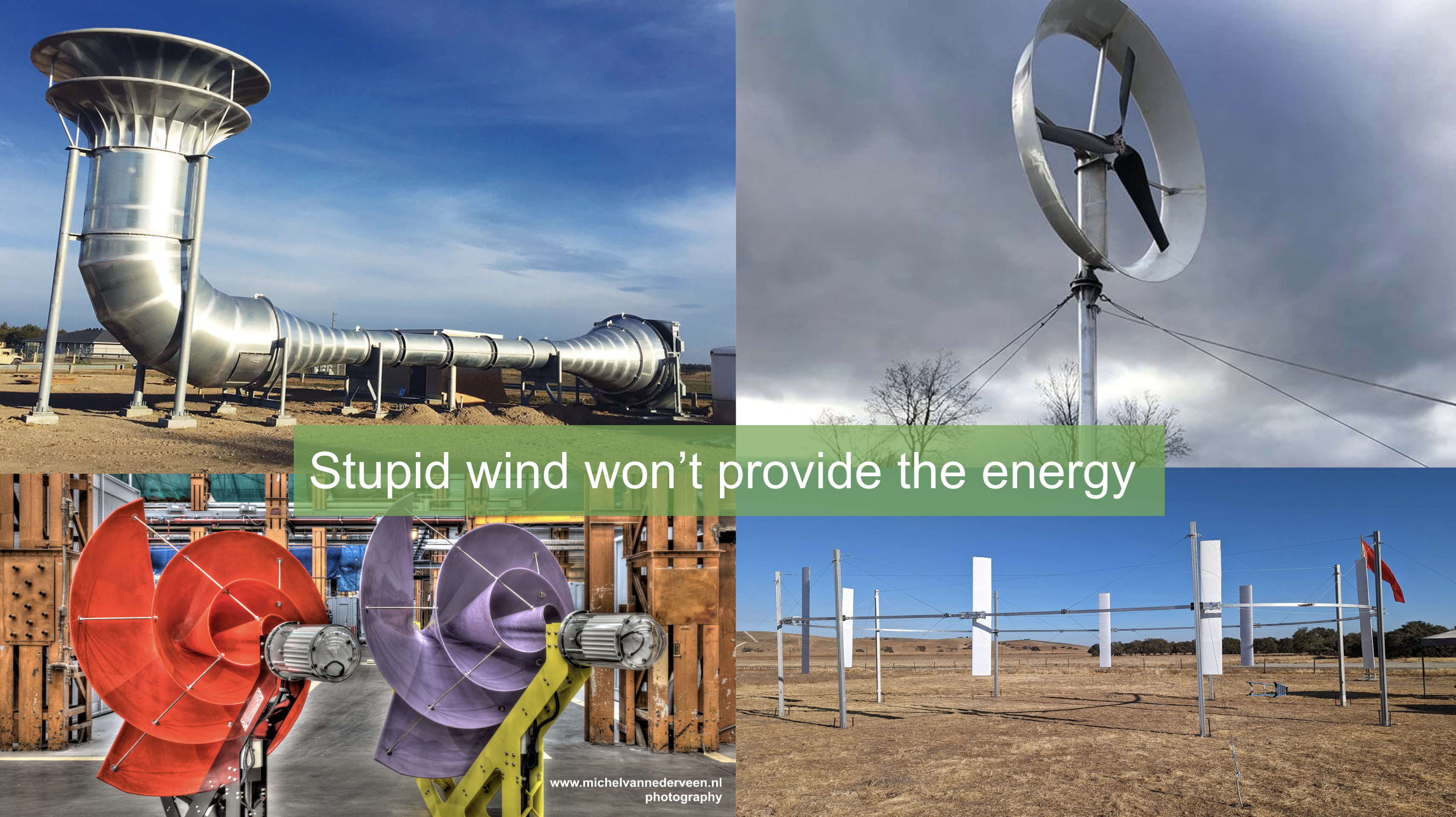
Stupid wind won’t provide the energy. I’m sure there’s going to be a bunch of chancers like the people behind Sheerwind, the Sheerwind Invelox and ducted things and the people who made that silly nautilus shell thing. And now the Air Loom, which is funded by Bill Gates’ Breakthrough Energy’s venture capitalist fund to the tune of millions of dollars. That’s the stupid wind turbine blades on a clothesline thing in the lower right hand corner.
We’re going to end up with a new round of these people. They’re going to come out of the woodwork because they’re going to see the opportunity to sell stupid stuff that doesn’t work to your customers. It’s been about a decade. I was the senior fellow of wind in part because I went through each one of these saying, is there anything here? And with a mostly open mind. I’m a broad spectrum nerd. I was interested. What I rapidly found was all of these things had been invented before. There was a resurgence every decade. Ducted wind, like the top two, the first attempt to build one of those was in the 1930s in the United States.
They never work, but the pitch sounds nice. Farmers like birds too, except when they’re eating their crops. You’ll be spending some of your time over the next four years pushing away stupid wind and my sympathies to you for that. You’re going to have to dust off your explainers about why these things don’t work and won’t work. You’re going to end up with Air Loom because it’s high profile, because it’s got Bill Gates’s name and venture capital behind it. Farmers will say, well, why don’t I use one of these Air Loom things? You’ll have to explain it again and again. I’ve published on Air Loom because, you know, stupid wind is coming back, so I’m now publishing on stupid wind again. I publish on stupid stuff in a lot of domains, but wind energy is a place where I spent a lot of time for a while.
So, yes, stupid wind won’t provide the energy. Solar panels have significant headwinds. Natural gas is going to increase in price. That means that you guys have a significant opportunity with distributed wind manufactured in the United States. I think it’s a good news story for you guys, it just looks a little bleak right now.
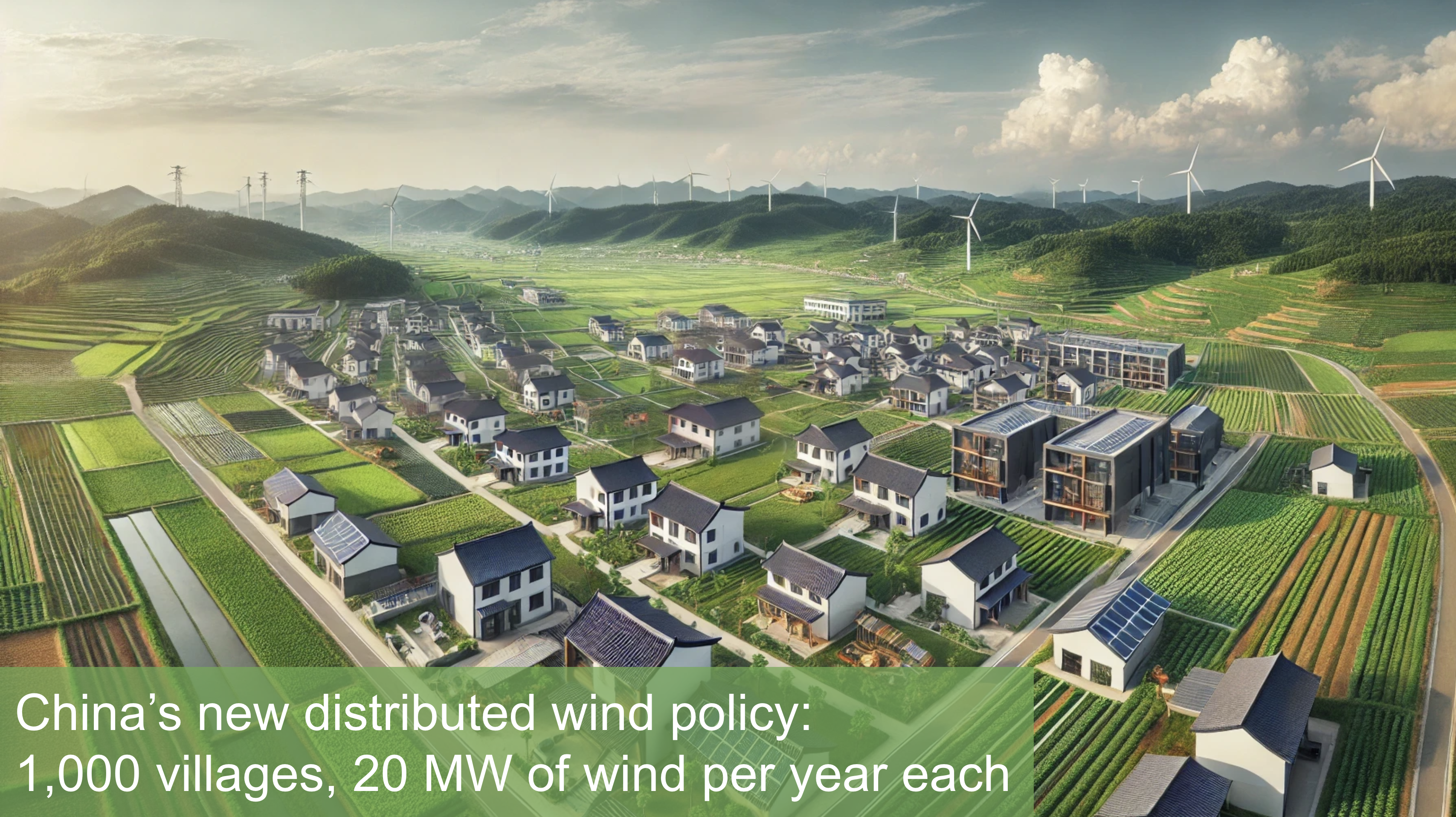
I’d like to share with you something that you might or might not be able to use in your lobbying. So 10 or 15 years ago, China had a 10,000 villages policy. The 10,000 villages policy said, let’s put solar panels on everything in southeastern China. For context, southeastern China is like the northeastern United States. It’s where a lot of the populace lives. It’s the densely populated part.
I was speaking recently to David Fishman, who lives in Shanghai. He’s actually from Maine, but he hasn’t adulted anywhere except China. He’s an expert on Chinese electrical generation. I was talking with him recently, and he says rooftop solar is 50% of the market in China. They have solar panels on everything. Part of that is governmental policy. The governmental policy said, in every county, a developer is going to bid on every rooftop. They have to commit to doing 50% of municipal buildings, 30% of residences, 50% of industrial sites in the entire county, bid on the entire thing and then spend years putting solar panels on all of those things.
David Fishman was standing on the roof of the small high school, which is right next to the municipal offices, which is right next to everything else. It’s a small cluster and it was one of 900 villages in this area. They put 170 kilowatts of solar on the various small roofs. Then they repeated that 900 times. They have massive success in their densely populated areas with solar.
Now China is trying to replicate that with distributed wind. They define it pretty much the same way that you guys do. It’s a similar definition. It’s smaller scale wind. It’s small wind farms. It’s not massive wind turbines stretching to the horizon, which they have in massive deserts in the northwest, where they put them, just as there are massive wind farms in the prairies. They want 20 megawatts of wind in a thousand villages every year. Small-scale wind farms, community wind, the opportunity there is for once again, electrons flowing to rural industry, to rural homes, rural electrified vehicles, to rural heat pumps from wind energy to supplement solar. That’s their strategy.
I think you could sell this strategy as something to consider. I’m pretty sure that you’re not going to be able to say let’s have a developer bid for all the wind energy for an entire county’s worth of villages. But there’s likely something that would work in the US context. As you’re talking to your congressmen, your senators on Wednesday, as you’re talking to friendly influencers, consider how you would use this Chinese policy of locally manufactured wind turbines at small scale in more dense, in areas where you have stuff to enhance local generation of electricity and energy security.
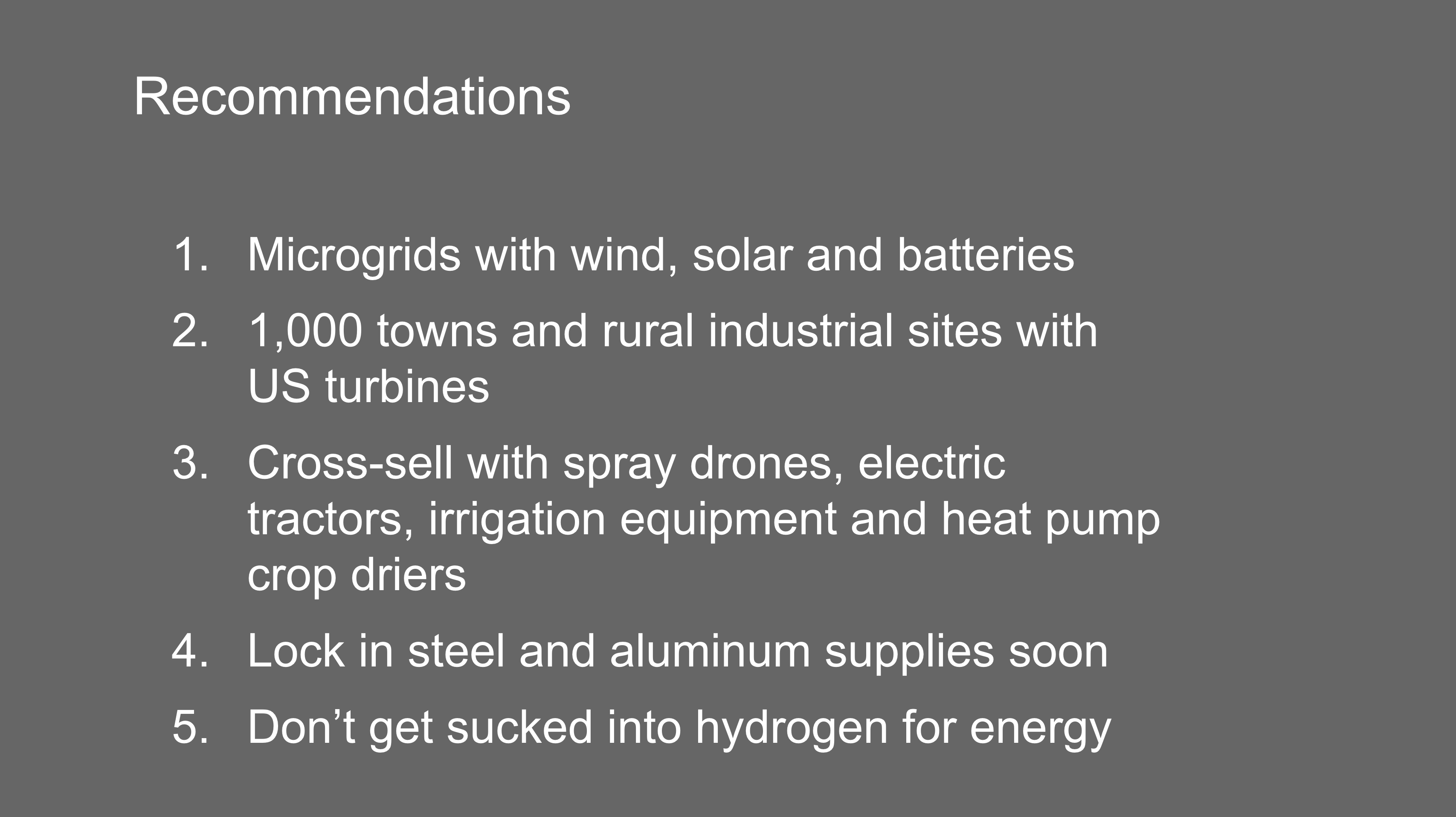
Now, the summary of the recommendations. Microgrids are going to be huge. You guys undoubtedly spend a lot of time talking microgrids. One of the things I just did was work with Rish Ghatikar, who was an energy fellow with General Motors with their energy division until recently and worked at the US Department of Energy on grid innovation in the 90s and has been involved in grid technologies for 30 or 40 years. We looked at the problem of how we’re going to charge big semi tractor trailers, the freight trucks that move so much freight in the United States, how we’re going to power those when they’re electric. The same constraints related to the grid connections are impacting the ability to expand electrified freight.
By the way, in case you get into any discussions, hydrogen trucks are dead. Battery-electric trucks are going to win. The battery energy density is increasing rapidly while costs are plummeting. We’re just going through the same thing that happened with hydrogen fuel cell cars versus battery-electric cars, just at a different scale.
The answer for charging trucks is microgrids, mostly with solar and batteries. They’re going to have as much rooftop solar and parking lot shade solar as you’ve probably seen in various places and buffering batteries on microgrids. That means that when the trucks roll in, they’re going to do megawatt-scale charging from the batteries, not from the grid. The batteries are going to be filled with a combination of a steady flow of electrons in from the grid, plus all that solar and sometimes a diesel generator in the wintertime when the sun doesn’t shine as much. Still much more efficient and effective and low emissions than trucks driving down the road on diesel.
You’re going to see that expanding. Roughly two-thirds of the states in the United States are going to continue down the path of electrification regardless of the national policies, and those are affluent states. What we’re going to see is a slowing of wind, solar, and battery electrification in the United States, but certainly not stopping. It’s probably going to be bigger than it was in 2014, 2019. I will say the last time the current president was in power, the rate of deployment of wind and solar didn’t change at all. With the most recent administration that has left Washington, it increased somewhat, but it didn’t increase that much actually.
The economics of wind, solar, and batteries and electric cars are very clear and advantageous and they’re just getting better and better. You can’t fight economics. You can try, but it’s like the little Dutch boy with his finger in the dike. Eventually the dike, if there’s a hole in the dike, eventually the ocean’s going to come in.
Second thing, the thousand towns and rural industrial sites with US turbines. Pitch that story and maybe consider, can we say, hey, China’s stealing a march on us. Think about that.
The third one is, you may be doing this already, and if so, my apologies for teaching grandma to suck eggs. But look at those major new demand areas, the heavy lift spray drones, the electric tractors, the electrified irrigation equipment, heat pump crop dryers and the like. See about cross-selling. If you’re bringing in this new demand area for electricity, bring in the potential for part of the electrical generation being wind turbines.
Lock in steel and aluminum supply soon because the tariffs that have been announced on those are going to cause price fluctuations and challenges. Some of you are probably all over this already, but it’s an interesting time and there’s going to be some strong inflationary pressures domestically in the United States. Some of them are going to be on steel and aluminum.
Lastly, don’t get sucked into putting wind turbines up to make hydrogen for use. It’s a dead end. It’s thermodynamic and economic nonsense and you might not make your money back. I will say that hydrogen for energy and hydrogen for transportation is like stupid wind. It has the same problems. It’s going to be batteries in everything and grid ties for all that stuff.
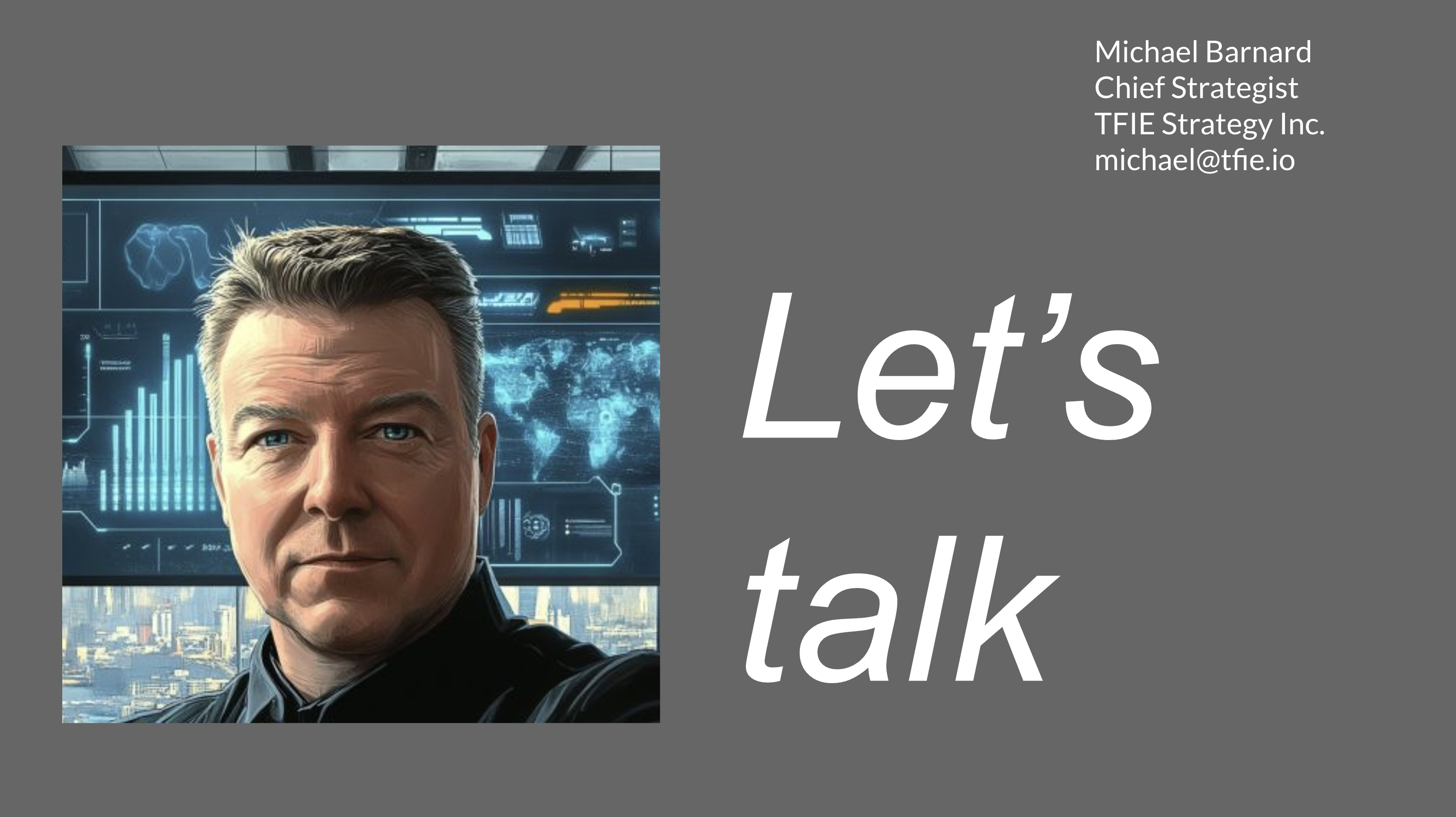
I’m optimistic about distributed wind. I think you should be. You’ve got some wicked problems. They’re big problems. But I think it’s actually good news for this specific audience. So, questions?
Mike Bergey: So do we have any questions for Michael? The way the audio works, the best way for him to hear is for me to repeat the question. So keep them simple, please. Any questions? Any comments? Yeah, so if you’ll. Well, if it’s an extensive one, please come up and speak directly.
Question: Hi Barnard. Ian Baron Gold, wonderful presentation. Love to have you talk a little bit about electrification of the fleets. There has been some work looking at the compatibility between solar and wind and how good that is across most of the United States and then the hybridization for solar, wind, battery at truck stops and things like that across the Midwest. So you had mentioned that you think it’s mostly going to be solar battery storage fueling trucks, but what do you think about wind in the wind belts in those same hybrid applications?
Michael Barnard: The full strategy report of 70 or 80 pages is aimed at the major logistics companies, the Walmarts, the UPSs. It’s also going to be aimed at the major truck stop firms, like Loves and Pilot Flying J. These are organizations with hundreds to thousands of truck stop locations and logistical depots. In the case of the logistical depots, they have or service hundreds of trucks in their fleets. One of the things we’re trying to do with that audience is be very specific about a set of modular technologies.
I would say that there’s a strong opportunity for distributed wind to go to those major organizations. When Rish and I’s white paper comes down, go with those in hand and say for this area, for these things, distributed wind should be part of your energy supply for your electrification of fleets. In this specific region of the United States, it’s going to have significant value. I wouldn’t put them necessarily in Maine, I’ll mention Maine again, into a valley where there’s a truck stop. Solar does work there. Wind is more challenging in some places. You guys know professionally where wind works better and where it works worse in the United States. As I’ve discussed with Mike in the past and know from my work in wind energy, even in the wind belt there’s places where it’s better and worse. I would definitely be promoting the idea of wind energy as part of the microgrid charging solutions for trucks because there’s a lot of energy that’s going to be flowing through those.
We actually have a ranking, a map of the United States by likelihood to electrify sooner because of favorable conditions. And guess what? You could probably imagine what that map looks like without actually doing what we did, which was analysis of underlying data on electricity prices and grid decarbonization and the like.
By the way, interesting factoid. In eight US States today, electric trucks are lower carbon than rail. Part of the competitive advantage of battery electrification is just lower carbon. That matters in a lot of US States. It matters in a lot of the states you can imagine are going to be the ones with electrified trucking first.
I think that wind can play a part there. We chose not to lean into it in our piece simply because we wanted to present a modular strategy that could move forward. Take Walmart for example. As Walmart picks this up for its thousands of distribution centers and warehouse, they’re going to do specific modeling for the energy conditions in their specific locations. That means they’re going to look at solar, they’re going to look at the grid connections, they’re going to look at the demand, they’re going to look at the incremental increase in electrified fleets and they’re going to be open to hearing that wind energy can play a part.
I hope that answers your question.
Question: Ian Baring-Gould from NREL. His question was given how important financing is and how to the growth of industries and sort of difficulties we’ve had in raising capital and trying to not pay attention to the batshit crazy stuff that Bill Gates is funding. What’s your advice on how the distributed wind industry can reach out to the deep pocket financiers of clean energy and make compelling business cases for investing in our companies and our technologies, which has not happened nearly at the scale of some other technologies, as you know.
Michael Barnard: Ian, if you’re at NREL, I’m sure you and your colleagues are feeling uncomfortable about the transformation of governmental stuff. My thoughts are with you and the other people at NHS and NIH who have been doing such tremendous work over the past decades. I’ve been watching the changes and so I feel for you and I feel for your colleagues.
To answer your question, financial equity is something which is going to be fascinating. I end up speaking to Jeffrey’s bank, for example, and they’ve turned over 3 trillion in investments in clean energy technologies and storage, wind, and solar through their infrastructure investment funds. Similarly, I’ve worked with the Danish infrastructure fund, AIP management. They’re on their third €4 billion green infrastructure fund. They’ve actually invested in a lot of wind farms and solar farms in the United States.
Two years ago I was assisting them with their theses on industrial heat and grid storage, and they’re investing in the United States. These are major infrastructure funds. From patterning out how to get access to capital, I’ll actually point to somebody who had stupid wind, a vertical axis wind turbine. The person who’s running that, he had bad ideas about wind energy. He and I spoke about it and I published on his sort of attempted certification which stalled off that thing. But he was really bright from a fiscal perspective.
The way he’d worked it out is he packaged up a set of capacity and sold that to an investment fund. I mean he was doing batteries and solar and ended up divesting the vertical axis wind turbine portion of his business. But his focus was on financialization of the assets. The money is there. I will say that US money is looking for the right opportunities inside the country. I’d say foreign money is probably a little less interested in investing in the United States right now in cleantech simply because there are more compelling markets globally. But a lot of American investors are looking around and saying where can I put my money to add value for the United States?
But it’s not the venture capitalists. The venture capitalists that are supporting Air Loom are on another planet. Their sense of reality is not aligned with what is actually required. They’re investing in stupid stuff. One of the things I did last year was assess the full portfolio of investments of Breakthrough Energy Ventures again. Only 52% of them passed basic sniff tests of the fundamentals of technology and the basics of economics, a full 38% were dead out of the starting gate. Like that stupid wind turbine blades on clotheslines thing which had been tried before. If you guys follow Paul Gipe, he’s published about the history of those stupid things as well.
The question is, how do you get to capital? I would probably be saying, where are the investment funds that are in there? How can we aggregate a set of things to talk American manufacturing? Jeffrey’s bank, as I say, has an entire floor devoted to this stuff. The problem with those investment banks, however, they like big deals. You have to be able to aggregate a sufficient amount of stuff. Now I could see, for example, that if you were to establish a deal with Pilot Flying J, picking a major truck stop chain, and they bought into the microgrid charging strategy and you said we can bring 20% of your energy demand in these states over the next 10 years and you sign a contract with them and then you can go take that to a Jefferies or other investment bank and they say, and that’s bankable.
The CEO of UGE is actually really shrewd about this stuff and he’s a really good guy. He just was into egg beaters as opposed to sensible wind turbines. I would actually reach out to him and say, hey, can you help us figure out how to package this? That would be my approach anyway.
But to be clear, my suggestion comes from first principles and from some of the people I’ve spoken to, but I’m not a financial guy. I’m a broad spectrum nerd. I look at the technology and the basics of economics, not how to pay for stuff. Other people figure out how to pay for stuff. So go find those people as well.
Question: The question is from Rocky McIntosh, who builds a 3 1/2 kilowatt innovative small turbine in Georgia, I believe, and his question is, where do you see off the trend in off-grid energy supply going?
Michael Barnard: Hi Rocky, it’s an interesting question. I don’t think that off-grid makes a lot of sense for most applications. But that said, I participated in putting 6 megawatts of wind turbines in a mine in northern Quebec, the Raglan Mine, because it displaced a lot of diesel. In remote areas, there’s definitely a strong need for that. If you can displace 80% of diesel requirements and wind energy is part of the solution, that’s great.
What’s interesting right now for the United States is that mining is going to come back, at least to a certain extent, mining and industrial processing for mining, with the requirement for onshoring critical minerals. The west, Europe and North America, took their eye off the ball on that one in the 1980s. The assumption the market would always be right turned out to be wrong.
I spent a bunch of time recently with Gavin Mudd, an Australian who’s washed up in Britain as a head of Critical Minerals Intelligence with the British Geological Survey. We spent a lot of time talking about lithium and copper and aluminum and things like that. United States has massive amounts of those critical minerals. It’s just stopped extracting, refining, and processing them simply because it was cheaper to buy them from China. China has locked up a lot of the global supply chain.
The United States is blessed with natural resources. That’s part of the reason it’s a rich country. Do you need oil? Well, we’ve got oil. Do you need natural gas? Well, we’ve got natural gas. Do you need copper? Well, the United States has got copper. You need steel? Oh look, we got steel. You need lithium. Well, we’ve got lithium. There’s going to be a return to extraction and refining and processing that’s going to need power, and a lot. Those things are by definition off-grid.
I’ll give you an example down in Australia, which like the United States is blessed with minerals and wide open spaces and not enough people to fill it up entirely. There’s a mine that put in a 6 gigawatt solar array to power the mine and then they disassembled it after six years, when the mine was tapped out. Fortescue bought $2 billion of electrified mining equipment recently.
These global indicators indicate what’s going to happen with at least some mining as it rebounds in the United States in order to have domestic security of supply around the mineral, around the minerals necessary for large scale electrification. Which is going to happen, as I say, because of the economics, regardless of the administration, just slower with this administration than it would have been otherwise. But that means that they’re going to be putting those things in.
Some of that is driven by things like the Chips and Science act, which is not going to go away, and is trying to onshore semiconductor manufacturing. The reason is really simple. The American military depends upon having the best chips, and it doesn’t make its own chips. It used to make its own chips, but then it just became a lot easier and cheaper to buy chips that were made by somebody else. In this case, it’s mostly on a little island about 100 miles from the coast of mainland China. Everybody in the world ceded chip manufacturing to Taiwan. The Chips and Science Act intends to onshore chip manufacturing. The United States has been building fab plants and those plants, well, they require some of the critical minerals. Where do you get those minerals from? Well, right now we’re getting them from China. That’s a problem.
So once again, there’s onshoring for chip manufacturing of silicon extraction. Some of the best silicon in the world comes from, I think it’s Kentucky [sic North Carolina], believe it or not. It’s amazing silicon. As you start looking around some of those locations, you start to see there’s opportunity for off-grid stuff. Now for the average facility, if you’re near a wire, you should plug into the wire. It doesn’t make sense not to take advantage of cheap electrons from the grid if they’re there. Even if for truck stops 20% of the electricity initially comes from the grid and 80% from solar in the first increment, eventually a big grid connection comes along because that’s necessary for full electrification. You still need the big grid connection, big batteries, big solar array, and you know, distributed wind can play a part where the wind conditions are right.
Now that you’ve asked me the question, Rocky, things are looking good. I’m not sure it’s for 3.5 kilowatt wind turbines, though. I would say it’s larger scale turbines, megawatt-scale, the top of the distributed wind scale. Three or four of those probably make more sense for a mine than 3.5kW. Not sure that’s the answer you wanted, but that’s the answer I have.
Chip in a few dollars a month to help support independent cleantech coverage that helps to accelerate the cleantech revolution!
Have a tip for CleanTechnica? Want to advertise? Want to suggest a guest for our CleanTech Talk podcast? Contact us here.
Sign up for our daily newsletter for 15 new cleantech stories a day. Or sign up for our weekly one if daily is too frequent.
CleanTechnica uses affiliate links. See our policy here.
CleanTechnica’s Comment Policy

